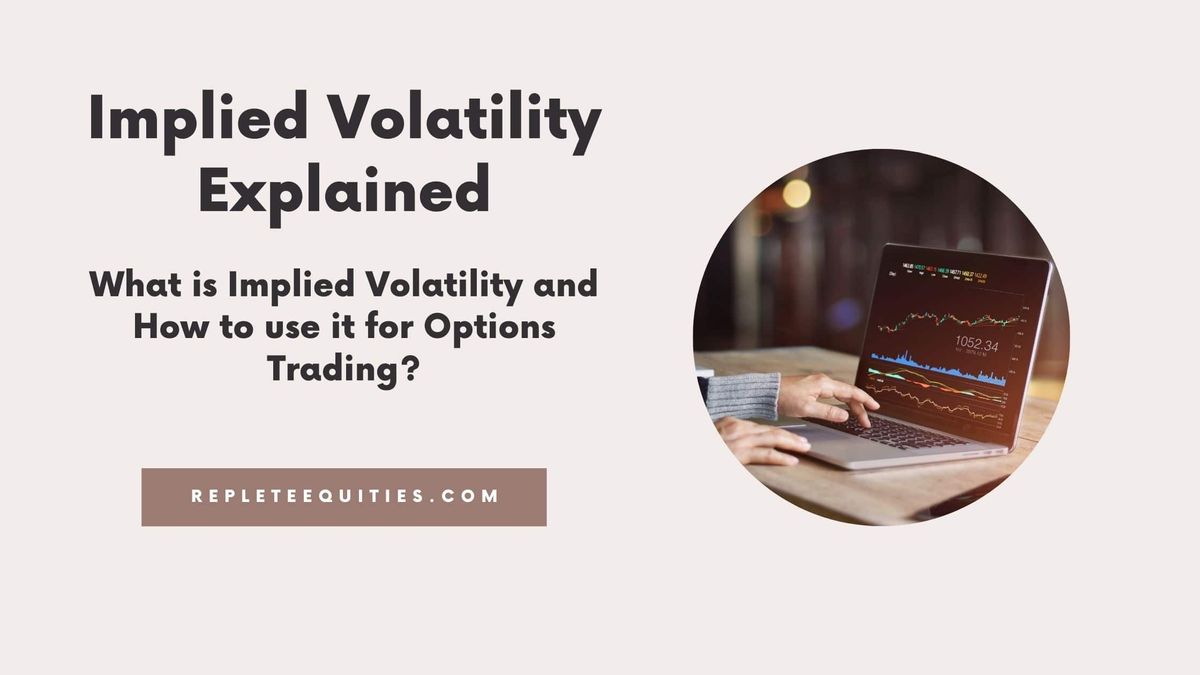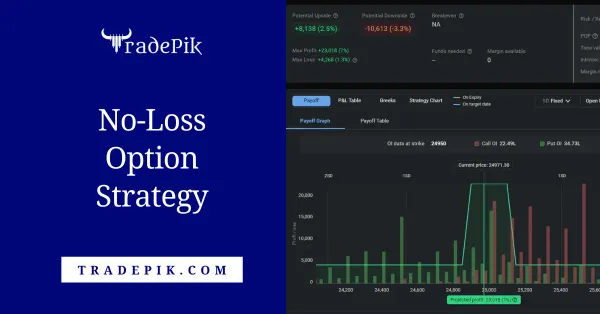How to use Implied Volatility to find high Probability Trades?
Implied volatility, an essential element in options trading. Learn what is implied volatility and how to use it to find high-probability options trades.

Hello Everyone! I hope you are doing well. Today again I have come up with a new article on Implied Volatility. Read this article to know about what is implied volatility and how you can use it to generate your monthly cheque from options trading.
Implied volatility is an important concept in options trading. It’s a measure of how likely the option’s market price will change as the underlying asset moves. This article explains what implied volatility is, how it affects an option’s price, and how you can calculate the IV for any given stock or index.
Implied Volatility Explained/ What is Implied Volatility?
What is Implied Volatility: Implied volatility is a measure of the market’s perception of risk.
Implied volatility is a measurement of the market’s expectation of future stock prices, and it can be used to estimate the likelihood that the price will change dramatically in either direction. It is typically quoted as an annualized percentage, which is called implied volatility.
The higher the implied volatility, the riskier the investment and vice versa.
- Join Mentorship Program to learn how to generate passive income through option strategies!
Implied Volatility and Options Pricing

Implied volatility is the price of an option that reflects the expected degree of future movement in the underlying security or commodity price.
Implied volatility is one of many factors that influences an options pricing model. For example, if a company’s stock has high implied volatility, its options will be more expensive than if its stocks had low implied volatility. Options pricing models use this variable and other variables to calculate the appropriate price for an option.
There are four different ways to measure implied volatility. One way is using European call or puts options prices; another way is using historical data on realized stock prices; another way is by looking at historical changes in a stock’s annualized standard deviation; and finally, you could use actual changes in a stock’s annualized standard rate change over time (for example, based on its annualized daily rates) as your input.
Implied Volatility and Implied Risk
Implied volatility and implied risk are ways to analyze the price of an option.
Implied volatility (IV) is the actual volatility that the market expects in a certain period of time.
Implied risk is the expected change in an asset’s value.
When looking at implied volatility, one should focus on two main characteristics: realized and implied. Realized volatility is what happened in the past, while implied volatility is what people believe will happen in the future. When it comes to analyzing these values, lower levels are better because they imply that the underlying asset will be less volatile over a specified period of time and thus provides for a less risky investment opportunity.
How is implied volatility calculated?
You can calculate implied volatility based on the Black-Scholes formula by taking the market price on the option in this formula.
Implied volatility is expressed as a percentage and represents how much the option’s price fluctuates with respect to changes in the underlying security’s price.
Implied volatility can be seen as an estimate of future realized volatility, or alternatively as a measure of risk associated with stock price fluctuations.
Nowadays, we have so many tools freely available on the internet, and you don’t need to calculate them manually. In fact, NSE itself is providing Implied Volatility value in its option chain on the website.
IV in the option chain?
As I have said earlier, nowadays, mostly free tools provide the value of IV (Implied Volatility). The most commonly used platform for option chain is NSE Option Chain. In the below screenshot, I have marked the IV column for both Calls and Puts.

In the above image, You can see IV in the pink box. NSE option chain itself gives us the value of IV. So no need to calculate it manually. Just go to NSE Option Chain and you will get the values.
I hope till now, you have understood what is Implied volatility and how you can calculate the value of Implied volatility (IV). In the next section, I will tell you how you can use this IV (Implied Volatility) to select a high-probability trade with a good risk: reward ratio.
How to use IV in your trading decisions?
As you know option selling has a high probability to make money compared to option buying. But how will you know when to buy and when to sell?
The simple rule of trading is: Buy when the price is low and sell when the price is high.
Here the price is option premium. This means: buy an option when the premium is low and sell when the premium is high. But how will you know when the premium is low and when the premium is high?
This Implied volatility (IV) will give you the answer for this. When IV is high that means option premiums are high and a good time to sell. Similarly, when IV is low that means option premiums are cheap and this is a good time to buy the options.
So based on the IV you can choose your plan of action.
Now the question comes to mind how will we know that IV is high and now IV is low? Don’t worry I will give you the answer in the next section. Read it carefully.
How to find high IV Stocks?
The best way to find high Implied volatility stocks is: to compare implied volatility with Annualised Volatility. If Implied Volatility is below the Annualised Volatility that means IV is low. Similarly, if IV is higher than Annualised Volatility that means IV is high. So you can scan stocks based on the Annualised Volatility to find IV stocks.
The second method is to Scan stocks based on the Implied volatility percentile (IVP) or Implied Volatility Rank (IVR). High IVP/IVR stocks have high IV. If IVP is above 80 that means IV of that particular script is high and a good time to create a credit spread strategy.
- To learn more about IVP & IVP read this article: IV Rank vs. IV Percentile
Implied Volatility Trading Strategies
I hope till now you have understood what is IV and how you can use it for your trading decisions. Now I will tell what are the Implied volatility Trading strategies.
When we trade with options, Greeks play a major role. These Greeks will give you an idea about the behaviour of your strategy in terms of different market conditions.
Vega is the Greek that tells you the behaviour of strategy in terms of IV.
If your strategy has a positive vega that means your strategy will give you money if IV increases in the future. Similarly, If vega is negative that means you will make money if IV falls. So by following the vega value you can choose your strategy. Here I’m sharing two strategies based on the High/low IV.
- If you think that IV (Implied Volatility ) is low and you are expecting that IV will increase in the future then go with a calendar spread.
- If you think that IV (Implied Volatility) is high and you are expecting a fall in IV, go with the Iron condor.
I hope this article will help you to take a trade based on IV with more confidence now. Now, as you have reached here, I have a pro tip for you that I’m using every month to generate my monthly cheque.
Pro Tip: Scan stocks based on IVP/IVR to find high IV stocks and create some limited risk credit spreads in these stocks.
If you want to learn how to generate your monthly cheque with option strategies, then check out our mentorship program.
Click here to know more about Option Strategies: A Mentorship program
If you have any queries related to what is implied volatility, type in the comment box. I love your feedback, so please share your feedback about this article in the comment box. If you like this article then don’t forget to share it with your fellow traders.





